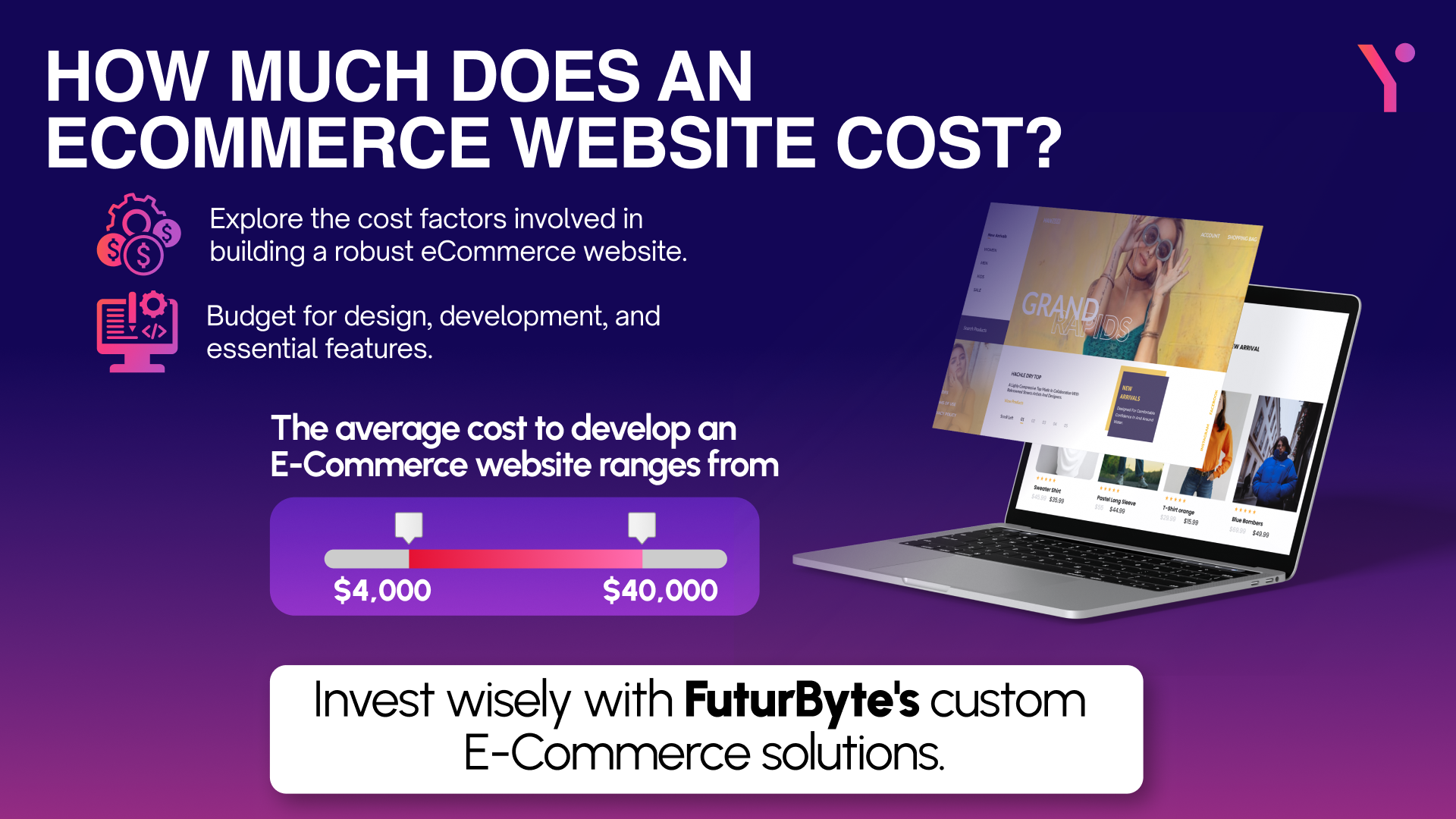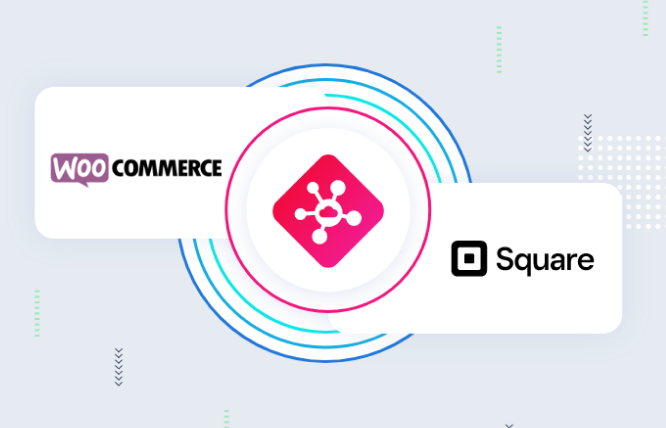Introduction
This blog breaks down the costs of developing and maintaining an ecommerce site, helping you understand all costs for building simple, mid-level, and enterprise-level ecommerce websites. It also uncovers hidden costs, while offering practical advice for keeping your budget in check.
Let’s talk about the big question every ecommerce enthusiast hasp: How Much Does an Ecommerce Website Cost?
The short answer is it depends. The cost ranges from $5000 to $250,000 or more.
As with any other product, ecommerce websites are available in different models, and the cost varies depending on the type of website. One option is to invest a few thousand dollars in creating a basic online store, while another option is to spend tens of thousands of dollars in obtaining a cutting-edge solution with all essential features.

As for the cost of creating an ecommerce website, it can vary. The cost depends on the features you require, the specific platform you decide to use, and if you want a unique design or a pre-made template. And most importantly, the costs that your ecommerce development company charges. Let’s break down the costs to give you a clearer picture.
Complete Cost Breakdown of Ecommerce WebsiteDevelopment
To give a better understanding, let’s divide the costs of creating an ecommerce website into several categories.
First, determine if you want to use one of the easy-to-use platforms, such as Wix, Shopify, or WooCommerce, or if you require more flexibility from a platform like Magento.
Do you have a specific design in mind, or will you require design services from a professional? If so, consider bringing on board a professional web development company to assist with ecommerce website development.
The next factor to look at is the number of products that you intend to sell. For instance, do you require advanced functionalities such as inventory control systems, payment options or shipping estimations?
Lastly, decide whether you are going to hire a developer or an ecommerce development company.
Now, let’s discuss the ballpark figures.
Basic Ecommerce Website Cost
If you are new to the ecommerce world and require a basic-level website for selling products, you may want an affordable option. The price range for a simple online store is usually from $5,000 to $10,00 which includes:
- A simple website design
- Basic product listings
- Secure payment gateway
- Essential shipping options
Platforms like Shopify and WooCommerce provide cost-effective plans suitable for small businesses. This choice is perfect for those with limited funds who still want a good ecommerce platform or those who are just starting their online business. It is a cost-effective way to get started without spending a lot of money.
Mid-Level Ecommerce Website Cost
For a more robust online store with additional features, expect to spend between $10,000 and $25,000. This mid-range option includes:
- Professional website design
- Inventory management system
- Intuitive design
- API integrations
- Marketing tools (email marketing, SEO)
- Customer reviews and ratings
- Improved website performance
Choosing this option means working with a web development company or ecommerce development company to create a site that stands out and offers a better user experience. This is ideal if you are aiming for a balance between cost and functionality.
Enterprise-Level Ecommerce Website Cost
For large businesses or those needing highly customised solutions, the cost can range from $25,000 to $250,000 or more. This premium option involves:
- A dedicated team of professionals
- Custom website development
- Complex integrations (ERP, CRM, etc.)
- High-end design
- Marketing tools (email marketing, SEO)
- High-level security
- Ongoing maintenance and support
This price point often includes Magento development services or Shopify Plus development services for extensive customisation. It is suitable for enterprises that need a powerful, scalable ecommerce platform with advanced capabilities.
Factors that Impact the Cost of Your Online Store
The cost is heavily influenced by the platform you choose. If you want to keep it hassle-free, then go with Shopify or WooCommerce. These platforms will help reduce costs, while more customisable options like Magento might require a bigger financial commitment. The pricing structure of each platform impacts your total budget differently.
Shopify: Shopify is easy to use, which makes it a great choice for beginners. It has various pricing plans, but costs can increase if you add extra features that need personalisation.
WooCommerce: WooCommerce, a free plugin for WordPress, allows you to personalise your store. While the plugin itself is free, you need to pay for hosting, themes, and possibly a developer to help set things up.
Magento: Magento offers lots of customisation and is a powerful ecommerce platform, but it is more complex and expensive. It is best for larger businesses with adequate budgets to spend on Magento ecommerce development and maintenance.
Website Design & Development
The price is directly affected by how complex and visually appealing your website is.
If you have a good grasp of technology and a sense of design, you can utilise pre-made templates to establish a simple website. If you want to employ a designer and developer to enhance the appearance of your website, keep in mind that it will require an additional cost.
Custom development is not only the most expensive option but also the best choice for unique features and a personalised experience.
Ecommerce Features
The functionalities you need will impact your budget. Consider the following:
- The number of products you sell affects the complexity of your website.
- Payment gateway options incur varying fees.
- Automated calculations can save time but might require additional costs.
- Sophisticated inventory tracking systems can be pricey.
- Built-in or integrated marketing features can influence the overall cost.
Ongoing Costs
Keep in mind that creating a website is only the first step. You will continue to have regular costs:
- Hosting costs
- Domain costs
- SSL certificate cost
- Maintenance costs
- Marketing costs
These are some factors that you should consider to calculate potential costs of developing an ecommerce site.
Here is How You Should Budget for an Ecommerce Website
Developing a realistic budget is important for any business that is trying to venture into the ecommerce platform. Here is a general breakdown:
- Website Development: Allocate funds for platform costs, design, development, and essential features.
- Product Sourcing: Budget for buying or manufacturing your products.
- Inventory Management: Consider costs associated with storage, shipping, and potential returns.
- Marketing and Advertising:Be willing to spend on social media, ORM, SEO, email marketing, and paid advertising.
- Payment Processing Fees: Consider charges related to credit cards and other payments.
- Shipping Costs: Budget for packaging, shipping carriers, and potential discounts.
- Customer Service: Allocate resources for handling customer inquiries and support.
- Contingency Fund: Always keep a buffer for unexpected
Remember, your budget will evolve as your business grows. Start with a realistic estimate and be prepared to adjust as needed.
Affordable Options for Building Your Online Store
If you have limited funds, there are many cost-effective methods to build an online store.
You can choose platforms like Wix and Squarespace, which offer free plans with limited features. If you have made up your mind to outsource the development, then consider Shopify Plus or hiring a WooCommerce development company and get tailored websites ready by professionals.
Drag-and-drop website builders like Wix allow you to create an ecommerce site without extensive technical knowledge. They often come with lower price tags and flexible customisation options.
A great way to scale is by focusing on functionality over flashy design. You might consider learning basic web development skills to save on design and development costs. If you encounter technical challenges, you can hire an ecommerce development company for effecient ecommerce development.
You can create an ecommerce platform without depleting your finances by considering the following options:
Comparing Costs: Different Ecommerce Platforms
| Platform | Starting Cost | Features | Pros | Cons |
| Shopify | $29/month | Easy setup, templates, payment gateways, security | User-friendly, scalable, great support | Monthly fees, transaction fees if not using Shopify Payments |
| WooCommerce | Free (WordPress) | Customisable, numerous plugins, flexible | Low starting cost, extensive features | Requires hosting, can become costly with add-ons |
| Magento | $1,500+ (one-time) | Advanced features, high scalability, custom solutions | Highly customisable, powerful | Higher cost, requires technical expertise |
| Wix | $5/month | Drag-and-drop builder, integrated hosting | Affordable, easy to use, good for small shops | Limited scalability, fewer advanced features |
| Squarespace | $15/month | Beautiful templates, all-in-one solution | Attractive design, simple setup | Less flexible, higher monthly cost for advanced features |
Note: These costs are the platform fee and you will need to pay extra for custom ecommerce development.
Hidden Costs of Running an Ecommerce Website
While the initial setup costs are important, there are usually additional hidden expenses that can accumulate, like:
- Transaction fees: Payment processors charge for each sale.
- Shipping costs: Packaging, labels, and carrier fees can be significant.
- Marketing expenses: Advertising, SEO, and email marketing require investment.
- Customer service costs: Handling returns, inquiries, and disputes takes time and resources.
- Chargebacks: Fraudulent transactions can lead to chargebacks and fees.
- Payment gateway fees: Some payment gateways charge monthly or per-transaction fees.
- Abandoned cart recovery tools: These services often come at a cost.
- Inventory management software: Advanced tools can be expensive.
Tips for Getting the Best Value for Your Ecommerce Budget
- Begin with a basic setup and expand as your business grows.
- Compare platforms, pricing, and features carefully.
- Look for discounts on products and shipping.
- Choose cost-effective shipping carriers and methods.
- Use software to streamline tasks and reduce labour costs.
- Keep track of all your spending for continuous improvement.
- Prioritise marketing channels and features that generate revenue.
- Consider outsourcing complex tasks to a dedicated team of ecommerce developers.
- Take advantage of free tools and tutorials to save money.
By following these tips, you can maximise your ecommerce budget and achieve a higher return on your investment.
Would you like to explore specific niches or target audiences for your ecommerce website?
Conclusion
So, there you have it. Creating an online store is not a one-size-fits-all process. The cost of developing a reliable website can vary significantly. From a basic online store to an advanced, fully featured platform, it can range from $1,000 to $100,000 and more, depending on the features, tech stack, integrations, and team costs.
Remember that apart from the initial development cost, ongoing costs like hosting, marketing, and customer service will also add to the overall costs. By effectively budgeting and coordinating your finances, you can create a successful ecommerce store without going overboard on expenses.
Frequently Asked Questions
The cost varies widely based on features and platform, ranging from a few hundred to several thousand dollars.
Budgeting depends on platform choice, design, and features. Start with around $500 for basic setups and adjust based on your needs.
There are multiple ecommerce platforms that are cheap but effective. Number one is Wix, and then we have WordPress, Shopify, and WooCommerce, which also provide affordable plans and templates to keep initial costs low.
Yes, if it aligns with your business goals and can generate a return through increased sales and customer reach.
The monthly costs of ecommerce platforms vary by platform and service, ranging from $20 to $100 or more, depending on features and hosting.
Ongoing costs include hosting, domain renewal, transaction fees, and maintenance, adding up to several hundred dollars annually.
Have questions or feedback?
Get in touch with us and we‘l get back to you and help as soon as we can!
![How Much Does an Ecommerce Website Cost? [Updated]](https://futurbyte.co/wp-content/uploads/2024/09/How-Much-Does-an-ECommerce-Website-Cost.png)



